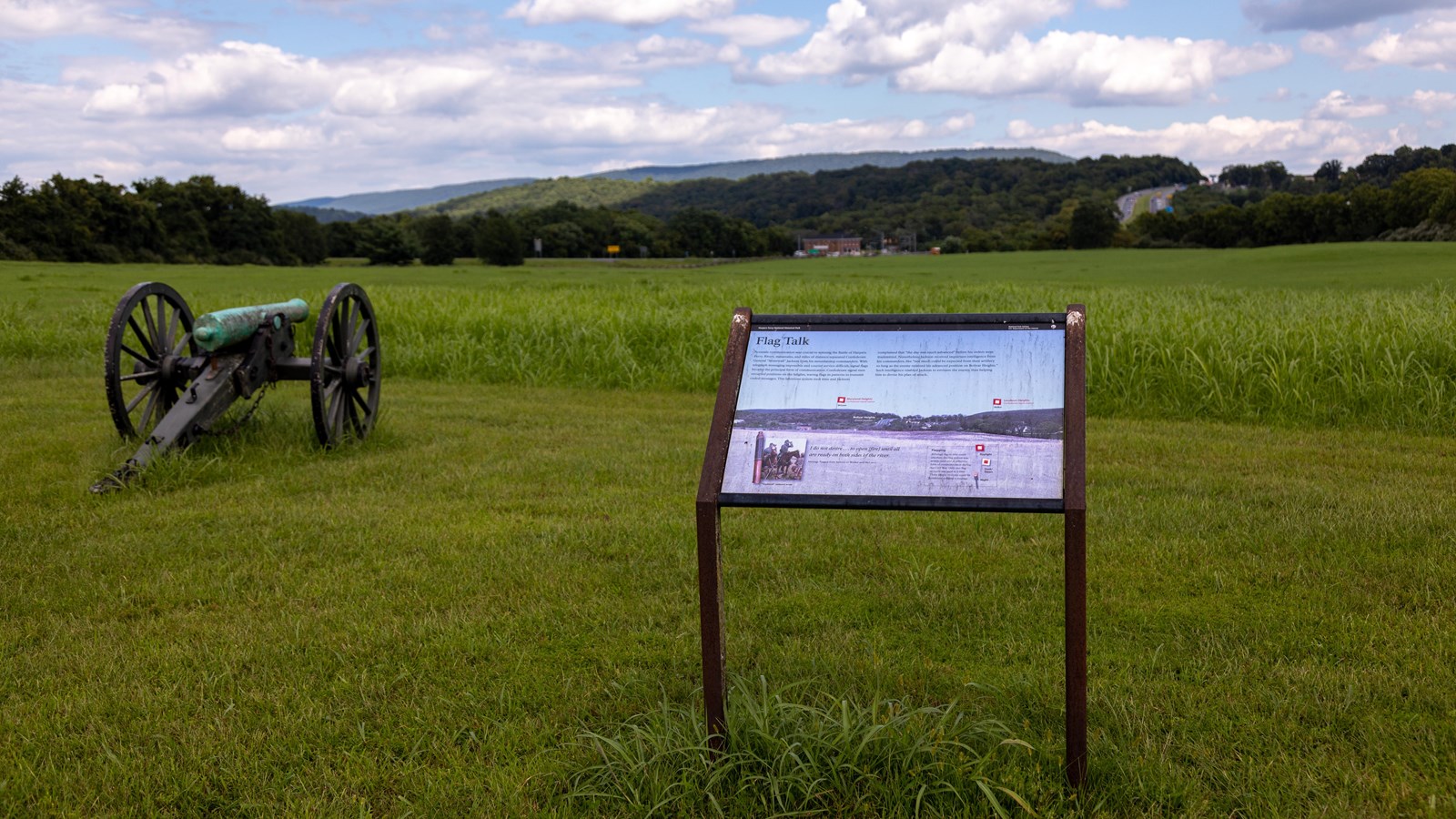Last updated: March 8, 2023
Place
Information Panel: Flag Talk

NPS / Claire Hassler
Historical/Interpretive Information/Exhibits
Accurate communication was crucial to winning the Battles of Harpers Ferry. Rivers, mountains, and miles of distance separated Confederate General "Stonewall" Jackson from his mountaintop commanders. With telegraph messaging impossible and courier service difficult, signal flags became the principal form of communication. Confederate signal men occupied positions on the heights, waving flags in patterns to transmit coded messages. This laborious system took time and Jackson complained that "the day was much advanced" before his orders were transmitted. Nonetheless, Jackson received important intelligence from his commanders, like "not much could be expected from their artillery so long as the enemy retained his advanced position on Bolivar Heights." Such intelligence enabled Jackson to envision the enemy, this helping him to devise his plan of attack.
Quotation: I do not desire . . . to open [fire] until all are ready on both sides of the river. Message flagged from Jackson to Walker and McLaws.
Illustration Caption: Flagging. Although fog or mist could interfere, the flag system was widely used and an effective form of communication during the Civil War. Only on flag or torch was used at a time. Three simple motions could be combined to signal a message. Daylight. Dusk/Dawn. Night.
